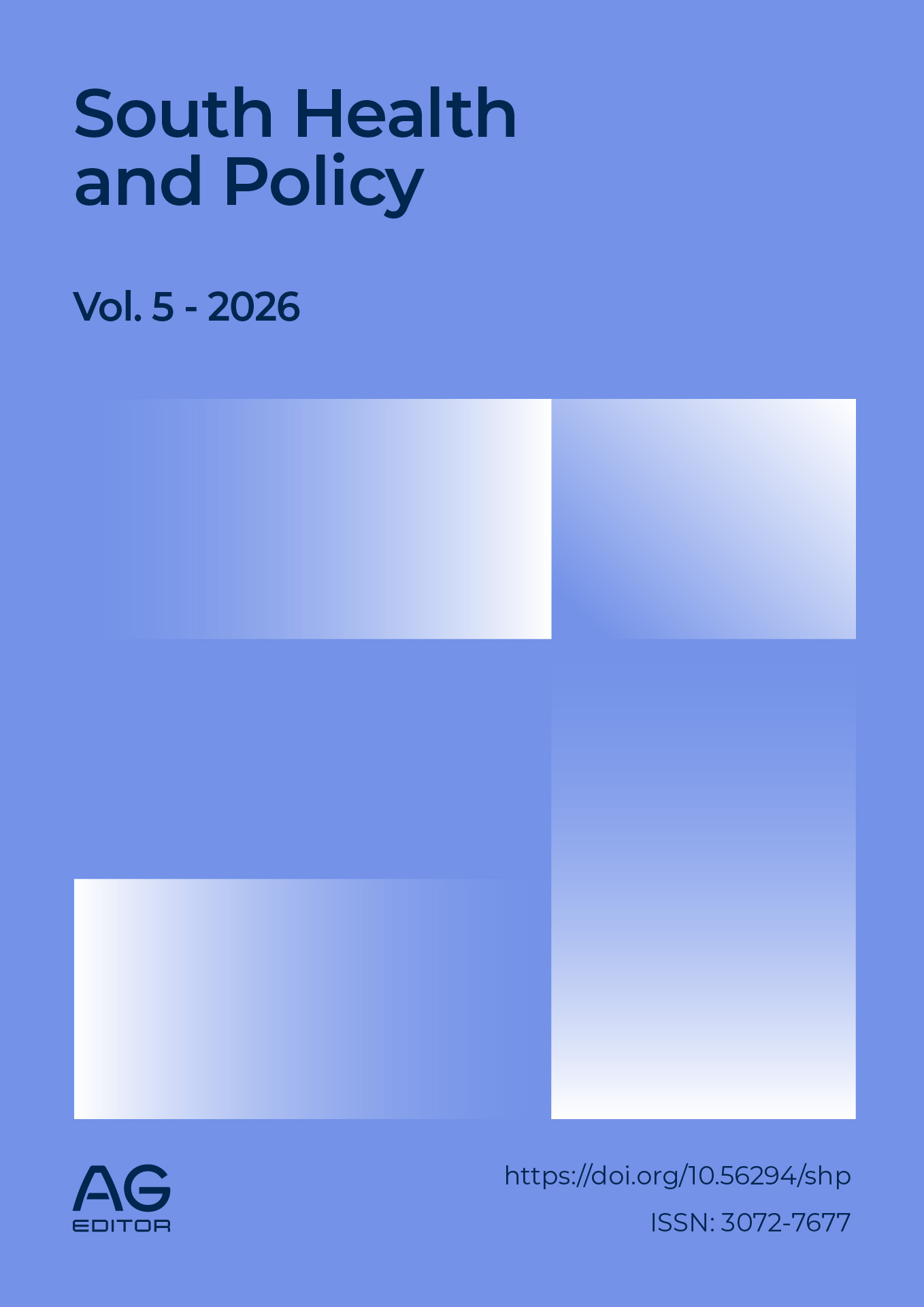Antimicrobial resistance and a versatile pathogen in the spotlight
DOI:
https://doi.org/10.56294/shp2026367Keywords:
antimicrobial resistance, resistance mechanisms, Staphylococcus aureusAbstract
Introduction: antimicrobial resistance is an emerging global phenomenon and is one of the most serious health problems today. The irrational use of antimicrobials has led to the early emergence of resistance mechanisms. Staphylococcus aureus is one of the pathogens classified as high priority for research and development plans for new antimicrobials due to its incidence causing infections with a high impact on health.
Objective: to carry out an updated review of the problem of antimicrobial resistance of Staphylococcus aureus, at a global and national level since the discovery of antibiotics, related factors and mechanisms.
Methods: a literature search was carried out in different databases such as Pubmed, SciELO, Science Direct, Google Scholar, MEDLINE and on the PAHO/WHO websites on the topics of microbial resistance and use of antimicrobials. Original and review articles published between 1998 and 2024 were consulted.
Results: the information collected on the topics was analyzed and argued
review objects carried out under an integrative approach. What is happening in Cuba was also explained.
Conclusions: The reproduction power of bacteria is faster than the speed of research and development. Faced with the difficult battle against bacteria such as Staphylococcus aureus, given the development of new resistance mechanisms to eliminate the clinical effectiveness of antibiotics, the necessary measures must be adopted to stop the development of bacterial resistance.
References
1. Herrero Díaz A, López Berrio S, Román Herrera EC. Resistencia antimicrobiana: una problemática agravada por la pandemia de COVID-19. Rev Inf Cient [Internet]. 2024 [citado ]; 103:e4512. Disponible en: http://www.revinfcientifica.sld.cu/index.php/ric/article/view/4512
2. Giono Cerezo S, Santos Preciado JI, Morfín Otero M del R, Torres López FJ, Alcántar Curiel MD. Resistencia antimicrobiana. Importancia y esfuerzos por contenerla. Gac. Méd. Méx [Internet]. 2020 [citado 10 de junio de 2024]; 156(2): 172-180. Disponible en: http://www.scielo.org.mx/scielo.php?script=sci_arttext&pid=S0016-38132020000200172&lng=es
3. Yu Haiyang HX, Quiñones Pérez D. La humanidad enfrenta un desastre: la resistencia antimicrobiana. Rev haban cienc méd [Internet]. 2021 [citado 10 de junio de 2024]; 20(3): e3850. Disponible en: http://scielo.sld.cu/scielo.php?script=sci_arttext&pid=S1729-519X2021000300020&lng=es
4. World Health Organization. Antimicrobial resistance [Internet]. Geneva: WHO; 2023. [Citado 10 de junio de 2024]. Disponible en: https://www.who.int/news-room/fact-sheets/detail/antimicrobial-resistance
5. Organización Mundial de la Salud. Sistema Mundial de Vigilancia de la Resistencia a los Antimicrobianos: Manual para la primera fase de implementación. Ginebra: Organización Mundial de la Salud; 2017.
6. Organización Mundial de la Salud. Worldwide country situation analysis:
response to antimicrobial resistance. Geneva: World Health Organization, 2015
[citado 12 de junio de 2024]. Disponible en: http://www.who.int
7. Organización Mundial de la Salud. who-updates-list-of-drug-resistant-bacteria-most-threatening-to-human-health [citado 12 de junio de 2024]. Disponible en www.who.int/es/news/item/17-05-2024
8. Castellano González MJ, Perozo-Mena AJ. Mecanismos de resistencia a antibióticos β-lactámicos en Staphylococcus aureus. Kasmera [Internet]. 2010 [citado 12 de junio de 2024]; 38(1): 18-35. Disponible en: http://ve.scielo.org/scielo.php?script=sci_arttext&pid=S0075-52222010000100003&lng=es
9. Pineda Higuita S, Posada López G, Giraldo Quintero L, Pulgarín Bedoya L. Resistencia a antibióticos del Staphylococcus aureus en estudiantes de una facultad de odontología. Rev haban cienc méd [Internet]. 2020 [citado 12 de junio de 2024]; 19 (6): [aprox. 10 p.]. Disponible en: https://revhabanera.sld.cu/index.php/rhab/article/view/2931
10. Guo Y, Song G, Sun M, Wang J, Wang Y. Prevalencia y terapias de resistencia a antibióticos en Staphylococcus Aereus. Front Cell Infect Microbiol [Internet]. 2020 [citado 12 de junio de 2024]; 10: 107. Disponible en:https://doi.org/10.3389/fcimb.2020.00107
11. Gordon Y, Cheung C, Bae JS, Otto M. Pathogenicity and virulence of Staphylococcus aureus. Virulence [Internet]. 2021 [citado 15 de junio de 2024]; 12(1): 547–569. Disponible en: https://www.tandfonline.com/doi/full/10.1080/21505594.2021.1878688?scroll=top&needAccess=true
12 Cámara argentina de especialidades medicinales [internet] Historia para recordar los antibióticos. Argentina junio 2022. [Consultado 20 junio 2024] Disponible en: https://www.caeme.org.ar/historias-para-recordar-los-antibioticos/
13. Errecalde JO. Uso de antimicrobianos en animales de consumo. Incidencia del desarrollo de resistencias en salud pública. Organización de las Naciones Unidas para la Agricultura y la Alimentación. Roma, 2004 [citado 20 de junio de 2024]. Disponible en: http://www.fao.org/publications
14. Ventola CL. The Antibiotic Resistance Crisis: Part 1: Causes and Threats.
Pharmacy and Therapeutics. 2015 [citado el 20 de junio de 2024];40(4):277- 83. Disponible en: http://www.ncbi.nlm.nih.gov
15. Organización de las Naciones Unidas para la Alimentación y la Agricultura. El Plan de acción de la FAO sobre la resistencia a los antimicrobianos 2016-2020. Organización de las Naciones Unidas para la Alimentación y la Agricultura, Roma, 2016 [citado 22 de junio de 2024]. Disponible en: http://www.fao.org/publications
16 Ministerio de Salud Pública. Actualización del Programa Nacional de Prevención y Control de la Infección Intrahospitalaria. La Habana: MINSAP; 1998: 1-16. Martínez Izquierdo AM, Pérez Amarillo JI. Estafilococos. En: Llop A, Valdéz Dapena M, Zazo J. Microbiología y parasitología médica vol.1. La Habana: Ciencias Médicas; 2001.p.153-63.
17 Jawetz E, Melnick JI, Adelberg EA. Estafilococos. 25. ed. La Habana: Ciencias Médicas; 2011. p. 185-7.
18 Prast G. Microbiología clínica. Bacteriología .Madrid: Panamericana; 2005.p 48-68.
19 Murray Patríck R, Rosenthal Ken S, Pfaüer Michael A. Staphylococcus y microorganismos relacionados. En: Medical Microbiology.15 ed. Madrid: Elsevier; 2013. p. 221-36
20 Burrillo Almudena E, Moreno A, Salas C .Diagnóstico microbiológico de las infecciones de piel y tejidos blandos. En: Cersenado E, Canton R. Procedimientos en Microbiología clínica. Madrid: Elsevier; 2006
21 Jhu CHC, Schreiber JR. Terapias y vacunas para infecciones bacterianas emergentes: aprendiendo del Estafilococo aureus meticilino resistente. Pediatr Clín North Am. 2006;(53)699-713.
22 Rodríguez Heredia O, Gómez Cok K, Costa García ML. Infección intrahospitalaria: su comportamiento en la provincia de Camagüey en el período de 1994-2007.Rev Cubana Invest Bioméd. 2008; 32(4):36-40.
24. National Nosocomial Infectious Surveillance System (NNIS). System Report, data summary from January 1992 through June 2004, issued October 2004. Am J Infect Control. 2004;32:470-85.
25. Diederen BM, Kluytmans JA. The emergence of infections with community-associated methicillin resistant Staphylococcus aureus. J Infect. 2006;52:157-68.
26. Sociedad Española de Medicina Preventiva, Salud Pública e Higiene. 2011. Estudio de prevalencia de las infecciones nosocomiales en España. EPINE 1990-2011: 22 años. 22º Estudio. Informe Global de España [monografía en Internet]; España [citado 22 de junio de 2024]. Disponible en: http://www.vhebron.net/ac/preventiva/epine/9-
epine_1990-2011.pdf
27. Araque M. La COVID-19 y la resistencia antimicrobiana, ¿Pandemias asociadas? Avances Biomedic. [Internet]. 2022 [citado 21 junio 20234; 11(1):1-5. Disponible en: https://dialnet.unirioja.es/servlet/articulo?codigo=8658571
28 Arbolaez Goicochea M C. Caracterización del Syhaphylococcus aureus aislado en piel y tejidos blandos .Hospital Universitario ¨ Arnaldo Milián Castro” [Tesis].Villa Clara: CPHE; 2016
Published
Issue
Section
License
Copyright (c) 2025 Sandra López Berrio, Yaima García Milera, Yuliet Calaña Domínguez, Tania Colome González, Adriel Herrero Díaz (Author)

This work is licensed under a Creative Commons Attribution 4.0 International License.
The article is distributed under the Creative Commons Attribution 4.0 License. Unless otherwise stated, associated published material is distributed under the same licence.






